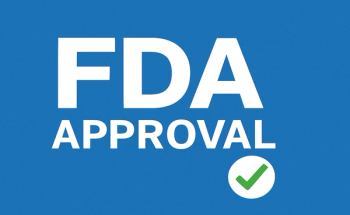
Publication Summary: Standardizing Criteria and Therapeutic Approach for Refractory Migraine
Background
Migraine treatment has evolved over the years to involve pharmacologic and behavioral strategies, differentiation from secondary types of headache, and comorbidity treatment. Although this approach has helped relieve migraine pain for many patients, some are refractory to treatment and continue to experience migraine and its associated disability. These patients may have neurotransmitter pathways that are unaffected by available pharmacologic agents and/or pronociceptive mechanisms that are upregulated to a degree that cannot be treated. They may also have functional and structural brain changes and genetic variants that could affect response to therapy. Ultimately, the pathophysiology of refractory migraine is unknown, and universally accepted criteria for the condition do not exist. Developing a universal characterization of refractory migraine could help with selecting the right therapy, determining appropriate type of care, identifying risk factors, and choosing appropriate patients for therapeutic studies. The article summarized below reviews the varying criteria that currently exist for refractory migraine, proposes a set of standardized criteria, and reviews management strategies.1
Differences Among Current Criteria for Refractory Migraine
Because the pathophysiology of refractory migraine is currently unknown, it has not been possible to develop criteria based on migraine mechanisms. Over the past several years, a few groups have proposed criteria to define and characterize refractory migraine; however, these proposals vary considerably. For example, the criteria of the Refractory Headache Special Interest Section of the American Headache Society (AHS) include episodic and chronic migraine, while the European Headache Federation (EHF) criteria include only chronic migraine. The AHS criteria include medication overuse headache (MOH), while EHF criteria do not. The definition of treatment failure for migraine also varies across criteria: The AHS criteria involve only pharmacologic treatment failure, whereas the EHF requires treatment of comorbidities by a multidisciplinary care team. Some proposals require that both acute and preventive treatments have failed to consider migraine refractory, but the authors state that response to acute treatment may not correlate to response to preventive treatment; therefore, each should have separate criteria, and attention should be directed toward prevention for chronic migraine as this condition is challenging to manage.1
The criteria for refractory migraine from different groups also vary on the definition of treatment failure in terms of pharmacologic agents. Some list only treatments with solid evidence for chronic migraine efficacy (which may be difficult for some health care systems to access), while others include those with weaker evidence. The number of preventive drug classes that patients are required to try without experiencing relief generally ranges between 2 and 4, and there are also variations in the designated length of treatment with each therapy and the measured lack of improvement achieved within that timeframe to be considered a failed treatment.1
Criteria Proposal
The authors noted that the criteria described above have a low threshold for the definition of refractory migraine and are subject to different interpretations. In an effort to standardize and operationalize criteria, the authors proposed the following definition for refractory migraine1:
- Chronic migraine is diagnosed using the International Classification of Headache Disorders criteria.
- MOHs are not included (cases of medication overuse can be included after ruling out MOH)
- Chronic migraine fails to respond to 5 classes of preventive treatment, including at least 2 of the following: topiramate, onabotulinumtoxin A (at least 2 quarterly injections), and calcitonin gene-related peptide pathway monoclonal antibody. Additional classes may include beta blocker, tricyclic antidepressant, serotonin-norepinephrine reuptake inhibitor, sodium valproate/divalproex sodium, and other classes of preventive treatments with confirmed efficacy for migraine.
- The pharmacologic treatments must be given for at least 2 months (after dose titration) at a dose that is either recommended by treatment guidelines or maximally tolerated, unless adverse effects (AEs) require an early termination.
- With this treatment approach, failure to respond is defined as a “less than 50% reduction in frequency and/or severity of monthly migraine days.” Failure could also involve intolerable AEs or the presence of a contraindication to drug therapy.
Managing Refractory Migraine
Several clinical strategies can be implemented to address treatment failure for migraine. Clinicians should conduct an initial and then periodic evaluation of the patient to accurately diagnose the primary headache disorder, identify secondary headache disorder(s) if present, and detect relevant triggers and comorbidities. Triggers of migraine commonly include medications, hormonal factors, psychosocial issues, diet, and lifestyle. Medication overuse and withdrawal are frequent triggers; therefore, clinicians should explore patient patterns of use for both prescription and over-the-counter medications. Psychiatric comorbidities can influence headache progression, refractoriness, and medication adherence, and these comorbidities must be addressed and treated as part of the management strategy for migraine. Sleep disorders, such as insomnia, hypersomnia, obstructive sleep apnea, periodic leg movement disorder, and circadian rhythm disorders, can cause headache and should also be addressed.1
Patient education has an important role in helping patients to understand the trigger factors specific to their migraine and to make lifestyle modifications—such as managing stress, exercising, staying hydrated, maintaining healthy sleep habits, and avoiding caffeine and alcohol—that may reduce migraine frequency. Clinicians may also consider referring patients to biobehavioral therapy, such as cognitive behavioral therapy, biofeedback, or relaxation therapy, which may effectively treat both acute and chronic migraine, particularly if combined with pharmaceuticals.1
The success of pharmacologic treatment for refractory migraine can be enhanced by using evidence-based guidelines for treatment selection, giving each medication an adequate trial, and providing ample education to the patient. Preventive treatment should be prioritized. The selected therapy should initially be given at a low dose and the dose incrementally increased each week. Although it is important to set a target dose, the dose may be either: 1) discontinued prior to reaching target if migraine-related symptoms have been substantially reduced or, conversely, if unbearable AEs have occurred, or 2) increased above target if there are no unbearable AEs. Once the minimum effective dose or maximum tolerated dose has been reached, the therapy should be trialed for at least 2 months. For patients who do not reach success with 1 therapy, a second medication with a different mechanism of action may be added to the regimen. Short-term bridge treatment may also be used for symptom management during the initial weeks of the therapy trial, because it can take time for the therapeutic to exert its full effect.1
Patient understanding and engagement are crucial when trialing pharmacologic treatments. Treatment success is defined as “a 50% reduction in attack frequency, a significant decrease in attack duration/severity, or an improved response to acute medication.” Patients should align their expectations based on this definition so as not to consider the pharmaceutical agent a failure if it does not provide full symptom relief. They should also understand common AEs and how to manage them, particularly if the AEs typically resolve over time and do not warrant treatment discontinuation.1
If the above strategies are not effective, clinicians may recommend inpatient treatments, such as intravenous dihydroergotamine and intravenous lidocaine, or neuromodulation with either invasive or noninvasive devices.1
Conclusions
Patients with refractory migraine can experience substantial disability and reduced quality of life. Currently, the pathophysiology of refractory migraine is not well understood and definitions of the condition vary. Adopting a standardized set of criteria for refractory migraine, such as the criteria proposed by the authors, may help clinicians determine the optimal care approach and therapies for their patients.1
Reference
- D’Antona L, Matharu M. Identifying and managing refractory migraine: barriers and opportunities? J Headache Pain. 2019;20(1):89. doi:10.1186/s10194-019-1040-x
Newsletter
Stay ahead of policy, cost, and value—subscribe to AJMC for expert insights at the intersection of clinical care and health economics.
















































